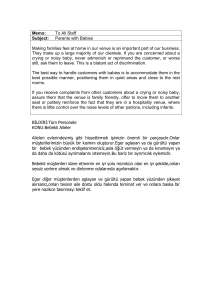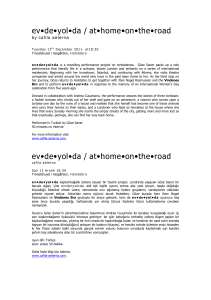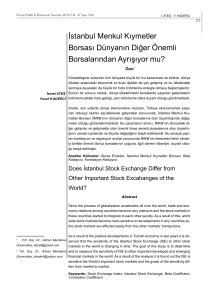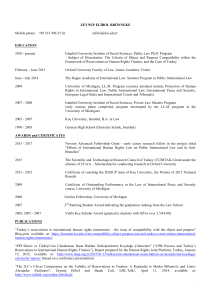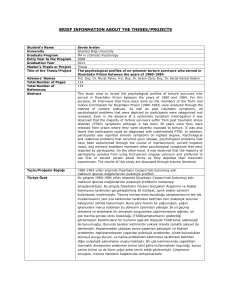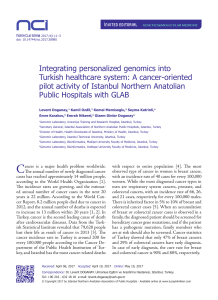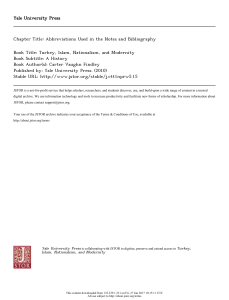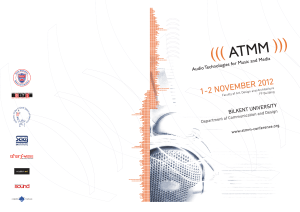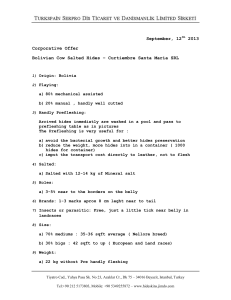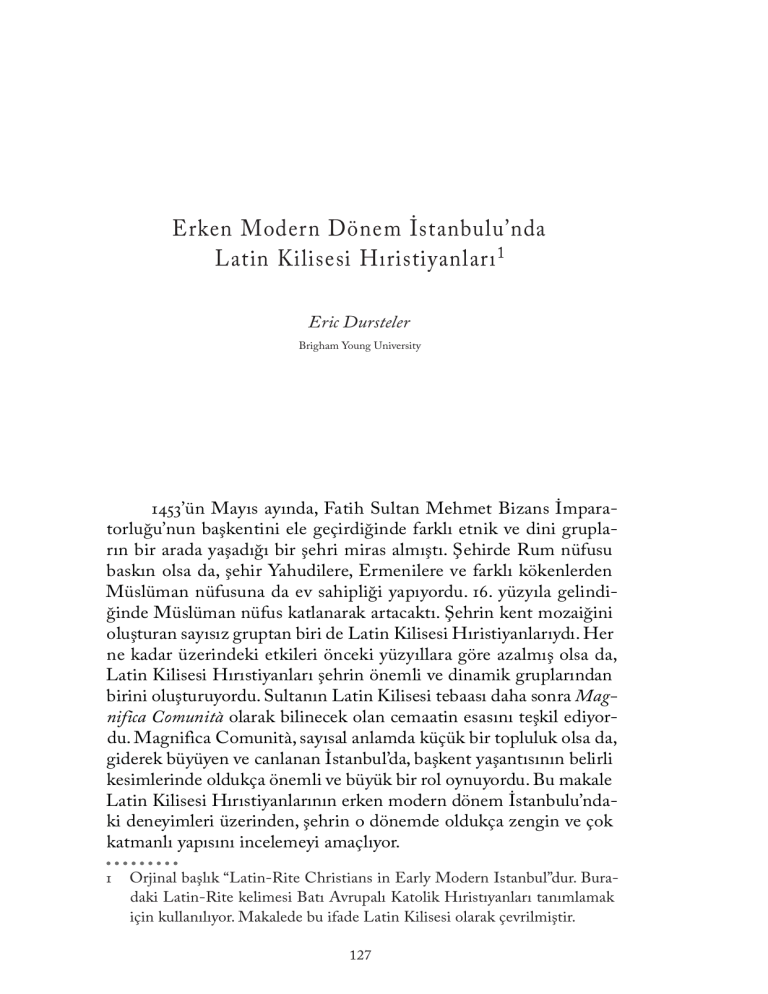
Erken Modern Dönem İstanbulu’nda
Latin Kilisesi Hıristiyanları 1
Eric Dursteler
Brigham Young University
1453’ün Mayıs ayında, Fatih Sultan Mehmet Bizans İmparatorluğu’nun başkentini ele geçirdiğinde farklı etnik ve dini grupların bir arada yaşadığı bir şehri miras almıştı. Şehirde Rum nüfusu
baskın olsa da, şehir Yahudilere, Ermenilere ve farklı kökenlerden
Müslüman nüfusuna da ev sahipliği yapıyordu. 16. yüzyıla gelindiğinde Müslüman nüfus katlanarak artacaktı. Şehrin kent mozaiğini
oluşturan sayısız gruptan biri de Latin Kilisesi Hıristiyanlarıydı. Her
ne kadar üzerindeki etkileri önceki yüzyıllara göre azalmış olsa da,
Latin Kilisesi Hırıstiyanları şehrin önemli ve dinamik gruplarından
birini oluşturuyordu. Sultanın Latin Kilisesi tebaası daha sonra Magnifica Comunità olarak bilinecek olan cemaatin esasını teşkil ediyordu. Magnifica Comunità, sayısal anlamda küçük bir topluluk olsa da,
giderek büyüyen ve canlanan İstanbul’da, başkent yaşantısının belirli
kesimlerinde oldukça önemli ve büyük bir rol oynuyordu. Bu makale
Latin Kilisesi Hırıstiyanlarının erken modern dönem İstanbulu’ndaki deneyimleri üzerinden, şehrin o dönemde oldukça zengin ve çok
katmanlı yapısını incelemeyi amaçlıyor.
1
Orjinal başlık “Latin-Rite Christians in Early Modern Istanbul”dur. Buradaki Latin-Rite kelimesi Batı Avrupalı Katolik Hıristıyanları tanımlamak
için kullanılıyor. Makalede bu ifade Latin Kilisesi olarak çevrilmiştir.
127
OSMANLI óSTANBULU
Magnifica Comunità’nın geçmişi Latin Kilisesi kökenli tüccar,
diplomat ve seyyahların Orta Çağ’ın başlarında Bizans Konstantinopolisi’ni düzenli olarak ziyaret etmeye başlamalarına dayanıyor.2 Yüzyılın sonlarında Bizans İmparatoru I. Alexis Komnenos, Normanlar’a karşı yaptıkları savaşlarda Bizans İmparatorluğuna askeri destek
vermeleri karşılığında Venediklilere ticari imtiyazlar tanıdı. Böylece
cemaat şehre yerleşmeye başladı. Takip eden yüzyıllarda, özellikle de
1204’deki Haçlı Seferi’nin ardından, diğer Latin ya da Frenk olarak
anılan grupların Venediklilere katılmalarıyla Latin Kilisesi cemaatinin sayısı önemli ölçüde arttı. Şehrin yaklaşık olarak dörtte birinde
yaşayan Venedikliler ve genelde Haliç’in karşısında Galata ya da Pera’da kümelenen Cenevizliler, Bizans Konstantinapolü’ndeki en büyük iki Latin topluluğunu oluşturuyorlardı. Bu iki baskın gruba ek
olarak, Katalanların, Floransalıların ve Ragusalıların sayısı da azımsanmayacak kadar fazlaydı. Nüfusunun on binlere ulaştığı bu dönem
Latinlerin şehirdeki en parlak günleriydi. Yine bu dönemde Latinler
tarafından inşa edilen 35 kilise şehirdeki Latin nüfusunun son birkaç
yüzyıldaki artışının kanıtıydı.3
Latinlerin şehirdeki durumunun dönüşümü çok daha öncesine
dayansa da asıl büyük değişim 1453’ten sonra gerçekleşti. Bizans başkenti kuşatma esnasında ve sonrasında ciddi şekilde zarar görmüştü.
Fakat Sultan Mehmet, hem fethin son aşamasında bölge nüfusunun
Osmanlı Devleti’ne yardım etmesi sebebiyle, hem de ticaretin sekteye uğramaması amacıyla Galata ve çevresine saldırmadı. İstanbul’un
fethedildiği yüzyılın başlarında şehrin nüfusu hızla azaldı ve birçok
yerli Latin 1453 dolaylarında şehri terk etti. Fethin hemen akabinde
Mehmet’in büyük şehir tasarımı sonucu, şehrin bir zamanların geniş
Venedik kolonisi küçültülerek Galata’ya yerleştirildi. Mehmet’in yeni
başkentine girmesinden 10 yıl sonra meydana gelen ve uzun yıllar
suren Venedik Osmanlı savaşı sırasında bu koloni daha da küçüldü.
Bununla birlikte çoğunluğu Ceneviz kökenli olan bir grup aile şehirde kalmaya devam etti. Bu aileler, Kefe’den ve Ceneviz’in kaybettiği
2
3
M.A. Belin, Histoire de la Latinité de Constantinople, 2nd ed. (Paris: Alphonse
Picard et fils, 1894), 121-362.
E. Daleggio d’Alessio, “Recherches sur l’histoire de la latinité de Constantinople: Nomenclature des églises latines de Constantinople (Stamboul) sous
les empereurs byzantins,” Échos d’orient 23 (1924): 448-460.
128
LATóN KóLóSESó HIRóSTóYANLARI
diğer topraklardan göç eden nüfusla birleşerek şehirdeki Magnifica
Comunità’nın temelini oluşturdular. Şehirde kalan bu ailelerin bazıları
şunlardı; Draperis, Fornetti, Fortis, Galante, Grillo, Navoni, Negri,
Olivieri, Orlandi, Perone, Salvago Silvestri, Tesla.4
Latin kökenli nüfusun oranı, Osmanlı İstanbulu’nda yaşamlarını sürdüren Rum, Ermeni, Yahudi ve diğer azınlıklara oranla bir hayli
azdı. 16. yüzyıl sonları ve 17. yüzyıl başlarındaki belgeler İstanbul’da
yalnızca iki düzine Latin ailenin kaldığını, diğer bir deyişle Latin Kilisesi nüfusunun 500-600 kişiden fazla olmadığını gösteriyor. Ayrıca
geçici olarak İstanbul’a gelen ve ziyarette bulunan tüccarlar, seyyahlar ve Avrupalı elçilik görevlileriyle beraber Latin Kilisesi nüfusunun
1000 civarında olduğunu görüyoruz. Bu rakama muhtemelen sayıları
birkaç bin olan köleler de eklenebilir. Magnifica Comunità’nın ana
unsurunun demografik yapısında 19. yüzyıla kadar göreceli olarak bir
değişim olmadı.5
Öteki gayrımüslim milletlerden farklı olarak, Osmanlı İstanbulu’nda yaşayan Latin topluluğu hukuki ve siyasi haklara sahip değildi
ve Galata’daki Osmanlı yöneticilerinin kontrolü altındaydı.6 Latin
kökenli nüfusun yönetiminden başrahip ve rahip vekili tarafından
yürütülen 12 kişilik konsey sorumluydu. Fetihten önceki Ceneviz podesta’larının, yani valilerin yerini alan bu konsey, aynı zamanda Latin
kökenli toplumun din işleri ve İstanbul’da bulunan az sayıdaki kiliselerin yönetimleri üzerinde kısıtlı da olsa söz sahibiydi. Yasal hak
ve sorumlulukları sınırlı olan Latin Kilisesi liderleri genel itibariyle
kendi cemaatleri üzerinde bir dereceye kadar özerktiler.
Magnifica Comunità’nın coğrafi ve ruhani odağı ise İstanbul
Galata’daki en önemli Latin Kilisesi olan San Francesco Katedrali
idi. Cemaatin liderleri bu katedralde toplanıyor, cemaatle ilgili idari
ve dini belgeler burada korunuyordu. Katedralin işlevi bununla da
Mihail-Dimitri Sturdza, Dictionnaire historique et gènéalogique des grandes
familles de Grèce, d’Albanie et de Constantinople (Paris: Chez l’auteur, 1983),
564.
5 E. Daleggio d’Alessio, “La communauté de Constantinople au lendemain
de la conquête ottomane,” Échos d’orient 36 (1937): 311.
6 Halil İnalcık, “Ottoman Galata, 1453-1553,” içinde Edhem Eldem (ed.), Première Rencontre Internationale sur l’Empire Ottoman et la Turquie Moderne
(Istanbul-Paris: Éditions-Isis, 1991), 25-31.
4
129
OSMANLI óSTANBULU
sınırlı değildi; katedral İstanbul’da geriye kalan tarikatlar arasındaki
en büyük tarikat olan Fransiskenlerin mabediydi ve tarikat üyelerinin
arasındaki kardeşliği simgeliyordu. Sayıları ileriki yüzyıllarda giderek azalsa da, 15. yüzyıl itibariyle Galata siluetinde 11 Latin kilisesi
mevcuttu. İçindeki okul ve büyük kütüphanesiyle bir Cizvit kilisesi olan San Benedetto, San Giovanni Hastanesi, Kapuçin okuluna
ev sahipliği yapan San Giorgio Kilisesi ve gizemli suyuyla bilinen
Sant’Antonio Abbate adındaki küçük şapel bu kiliselerden bazılarıydı.7 Her sene Noel’de toplanan cemaat, yeni bir rahip, rahip baş-vekili
ve kilisenin sembolik onayını alan mali-dini işlerden sorumlu birer
yönetici seçerlerdi.
Magnifica Comunità, İstanbul’da marjinal bir yer işgal etmekteydi. Bir yandan, sayıları az olduğu için, cemaat üyeleri İstanbul’un
kalabalık nüfusunda kendi kimliklerini koruyabilmek için uğraşıyorlardı. Bu bağlamda, Latin cemaati için en büyük tehlike İstanbul’da
en fazla nüfusa sahip Hırıstiyan topluluğu olan Rumlardı. Latin cemaatinin bir bölümünün Rumlarla sıkı sosyal ve ticari bağları vardı.
Yine bu iki cemaatin üyeleri arasında yapılan çok sayıda evlilik de
mevcuttu. 1627’de Roma’dan atanan bir memur, Rumlar ve Latinler
arasında var olan bu bağı cemaatler arası evlilikleri yasaklayarak koparmaya çalışsa da bu deneme başarısızlıkla sonuçlandı.8 Kimliklerini
koruyabilmek için, Peralı erkekler uzun beyaz yakalı kıyafetler giyiyor ve ayırt edici bir şapka takıyorken, kadınlar ise bağcıklı “Ragusa
şapkası” kullanıyorlardı. Buna ek olarak, cemaat üyeleri çocuklarını
Katolik doktrin ve pratiklerine göre yetiştirmek için 16. ve 17. yüzyılda
dini okulların açılmasını desteklediler.9
7
E. Daleggio d’Alessio, “Recherches sur l’histoire de la latinité de Constantinople: Nomenclature des églises latines de Galata,” Échos d’orient 25
(1926): 21-41; a.g.y, “Recherches sur l’histoire de la latinité de Constantinople:
Nomenclature des églises latines de Constantinople (Stamboul et Péra)
disparues,” Échos d’orient 25 (1926): 308-315.
8 Eric R Dursteler, Venetians in Constantinople: Nation, Identity, and Coexistence
in the Early Modern Mediterranean (Baltimore: Johns Hopkins University
Press, 2006), 143.
9 Eric R Dursteler, “Education and Identity in Constantinople’s Latin-rite
Community, ca. 1600,” Renaissance Studies 18 (2004): 287-303.
130
LATóN KóLóSESó HIRóSTóYANLARI
Latinlerin kimliklerini koruma çabaları kendilerini toplumun
diğer kesimlerinden ayırdıkları anlamına gelmemelidir. Erken modern dönem İstanbulu, kültürlerin birbirleriyle etkileşim halinde olduğu, gruplar arasındaki sınırların değişkenlik gösterdiği bir şehirdi.
Bu sebeple, bu dönemin İstanbul’unu cemaatler arasındaki farklılıklardan ziyade birbirleriyle olan bağlantıları üzerinden tanımlamamız
gerekir. Farklı cemaat üyelerinin dini ve kültürel farklılıklara rağmen
birbirleriyle yaptıkları evlilikler bu bağın bir kanıtıdır. Ayrıca Müslümanların ve diğer grupların, yönetimin kontrolü altındaki tarikatlara
olan bağlılıkları da bunun açık bir göstergesidir. 17. yüzyıldaki bir gözlemciye göre San Antonio Abbate Kilisesi yalnızca belli dini ve etnik
grupların ziyaret ettiği bir kilise değildi. Ayrıca, kilisenin ve kilisede
akmakta olan suyun mucizevi şifasını duyan “Latinlerin, Rumların,
Ermenilerin ve bizzat Türkler gibi evrensel ve eşşiz kitleleri bir araya
getirmekteydi,” Hırıstiyanlar ve Müslümanlar kilisenin içinde uyumakta ve İstanbul’un akıl hastalarını iyileşecekleri umuduyla kiliseye
bağlamaktaydılar.10
Kültürler arasındaki farkların minimum seviyeye indiği bu şehirde Magnifica Comunità için en büyük tehlike şehirdeki diğer etnik
veya dini gruplar değildi. Tehlike Roma›dan atanan ve Latin Kiliselerinin, hayır kurumlarının, hastanelerinin, manastırlarının yönetimine ve cemaatin dini yaşantısına müdahale eden Avrupalı diplomatik
temsilci ve rahiplerdi. Bu durum Fransız ve Venedik kökenli cemaat
liderleri ile papalık tarafından atanan ve papalığı temsil eden bölge papazı arasındaki anlaşmazlıkların kaynağıydı. Bu papazlar, kâğıt
üzerinde, bütün dini meselelerde son sözü söyleme hakkına sahip
olsalar da, gerçekte İstanbul’u oldukça nadir ziyaret ediyorlardı. Bu
durum Magnifica Comunità’ya din ve kiliseyi ilgilendiren idari konularda önemli derecede özerklik sağlıyordu. Bu yüzden 17. yüzyılın
ilk dönemleri cemaat için oldukça sancılı geçti ve yükselen tansiyon
sonucunda Papa 8. Urban 1643 yılında kısa bir süreliğine cemaati aforoz etti.11
10 E. Daleggio d’Alessio, Relatione dello stato della cristianità di Pera e Costantinopoli obediente al sommo pontefice romano (Constantinople [Istanbul]: Edizioni Rizzo & Son, 1925), 68-70.
11 A. Trannoy, “La «nation latine» de Constantinople,” Echos d’orient (1912):
246-56.
131
OSMANLI óSTANBULU
Galata, erken modern gözlemciler tarafından evrensel olarak
Avrupalı ve Hıristiyan bir şehir olarak tarif edilse de, gerçek bundan
çok daha karmaşıktı. Halil İnalcık’ın da gösterdiği gibi şehrin Latin
karakterinin etkisi hızlıca seyrelmişti ve şehir zengin bir karşılaşmanın, kaynaşmanın mekânı olmuştu.12 Galata’da, Müslümanlar, Yahudiler ve bütün Hıristiyan mezhepler iç içe yaşadı ve çalıştı. Dolayısıyla
bazı akademisyenlerin çizdiği, dini ve kültürel olarak bölünmüş, birbiriyle paralel yaşayan ve kültürlerin nadiren kesiştiği bir şehir tasviri
gerçeği yansıtmıyor.13 Sonuç olarak, Galata’nın Latin Kilisesi cemaati
İstanbul’un geniş dünyasına yakından bağlanmıştı ve şehir hayatında Peralılar az olan sayılarıyla ters orantılı bir rol oynadılar. Bunun
önemli bir ayağını bazı ailelerin oynadığı kritik rol oluşturuyordu.
Bu aileler özellikle 16. yüzyılda ve 17. yüzyılın ilk yarısında Avrupalı
diplomatlar ile Osmanlılar arasında resmi olarak ve gayrı resmi birçok
yoldan arabuluculuk, tercümanlık yaptılar.
Magnifica Comunità mensuplarının erken dönem İstanbulu’ndaki kritik pozisyonlarını, Latin Kilisesi cemaatinin o dönemki en
etkili ve önemli ailelerinden biri olan Pironlar (veya Peroneler) örneğinde görebiliriz. Pironlar, Osmanlı Latin Kilisesi cemaatinin en
geniş ailesiydiler. Erken tarihlerine dair neredeyse hiç bir şey bilmememize rağmen 16.yüzyılın sonuna doğru cemaatin en zengin mensuplarından biriydi. Galata ve Pera’da çok büyük arazilere sahiplerdi
ve Osmanlı, Fransız, İngiliz, Venedikli, Habsburglu tüccarlar ve diplomatlarla kurdukları derin ticari bağlarla bölge ticaretinde aktif bir
rol oynuyorlardı. Ayrıca aile üyeleri Magnifica Comunità içindeki üst
düzey pozisyonları da ellerinde tutuyordu.14
Pironlar, İstanbul’da en çok kaynaştıkları Venediklilerle düzenli ticaret yapıyorlar, onların tüccar konseylerine katılıyorlar ve danışmanlık ve bazen de dragomanlık yaptıkları Venedik balyoslarına
borç para da veriyorlardı. Pironlar, çok önemli bir isim olan Venedikli dragoman Marcantonio Borisi dâhil olmak üzere Venediklilerin
önemli üyeleriyle evlilikler vesilesiyle ittifak kurdular. Venedikliler
12 İnalcık, “Ottoman Galata, 1453-1553.”
13 Eric R Dursteler, “Neighbors: Venetians and Ottomans in Early Modern
Galata,” in Multicultural Europe and Cultural Exchange, ed. James P. Helfers
(Turnhout, Belgium: BREPOLS, 2005): 33-47.
14 Dursteler, Venetians in Constantinople, 147-149.
132
LATóN KóLóSESó HIRóSTóYANLARI
Pironlara hukuki, siyasi ve ticari meselelerde düzenli olarak yardımcı
oldular.
Venediklilerle olan yakın ilişkilerine rağmen, Pironlar diğer
Avrupalı diplomat ve tüccarlarla ilişki kurmakla kalmadılar, Osmanlı
İmparatorluğu’ndaki ağlarını da genişlettiler. Divan-ı Hümayun ve
Topkapı Sarayı’da bağlantıları olmakla birlikte, Osmanlı toplumunda da rahatça ilişki kurabilmekteydiler. Siyasi önemi olan Osmanlı
ailelerine mensup kadınlarla yakın bağlar kuran elçi eşleri de bu diplomatik ağların bir parçasıydılar. Ayrıca, Osmanlılar’ı ve uluslararası
tüccar cemaatinin üyelerini alakadar eden hukuki ve ticari meselelerde aile üyeleri arabulucu görevini üstlenirlerdi. Pironlar tam da
Osmanlı, Venedik, Cenevizler, Müslüman, Ortodoks ve Katolik muhitlerin kesiştiği noktada faaliyet göstermekteydiler. Tam olarak aynı
düzeyde olmasa bile, Magnifica Comunità’nın diğer üyeleri de erken
modern Osmanlı İstanbulu’nda rahatlıkla hareket edebilmekteydiler.
Birçokları Fransa, İngiliz, Hollanda ve diğer Avrupalı devletlerin elçiliklerinde dragoman olarak çalışırken, Osmanlı İstanbulu’nun sosyal
ve siyasi dünyasında statü ve siyasi etki sahibi oldular.
Şüphesiz, erken modern dönem İstanbulu’nun karmaşık yapısı
nadiren de olsa Latin Kilisesi Cemaati’ni sarsan kıvılcımlara sebep
olabiliyordu. Dolayısıyla mesela, genellikle Magnifica Comunità’nın
faaliyetlerine cevaben olmasa da, Avrupalı diplomatların entrikalarına
misilleme olarak Osmanlı yöneticileri zaman zaman Latin Kiliselerinin kapatılması tehdidinde bulunuyorlardı. 16 yüzyılın sonunda hem
içerde hem de dışarıda padişahların baş etmesi gereken ve Latin Kilisesi cemaatini de etkileyen daha büyük sorunlar vardı. Bu problemler Katolik Cemaati’nin içinde de sorunlara yol açabiliyordu. Bunun
yanısıra Galata’daki cemaatin kendi içinde de mal varlığı paylaşımından veya ailevi meselelerden kaynaklanan sorunları vardı. Fakat bu
meselelere rağmen düzen genel olarak huzurluydu.
Cemaate mensup bazı ailelerin soylarının tükenmesi, cemaat üyelerinin Avrupa’ya göç etmesi ve bazılarının da Ortodoksluğu
veya nadiren de Müslümanlığı seçerek asimile olmaları, aksi yöndeki
bütün çabalara rağmen, Magnifica Comunità’nın şehirdeki nüfusunun azalmasıyla sonuçlandı. 1582 yılında bir gözlemci, sadece Ortodoksluğa 400 cemaat hanesinin geçiş yaptığını ve az da olsa bir kısmının İslam’a döndüğünü tahmin etmekteydi. Cemaat mensupları
133
OSMANLI óSTANBULU
Ortodokslarla ve nadiren de olsa Müslümanlarla evlendi. 17. yüzyıl
seyyahı Pietro della Valle’ye göre, şevkle Latin Kilisesi’nin dini vecibelerini yerine getirmelerine rağmen, Peralılar “Rum adetlerini
benimsemişlerdi (grecheggiano)” gözlemini yapmaktaydı.15 Bu asimilasyon süreci en bariz bir şekilde dillerinde görülüyordu. Rumca,
giderek cemaatin konuşma dili haline gelirken İtalyanca da resmi
idari dilleri olmuştu. 17. yüzyıl boyunca hızlanan asimilasyon süreci,
Peralıların marjinal hale geldiği, diplomaside, ticarette yerlerini Fener Rumları’nın devraldığı sürece denk geldi. Bu süreç 17. yüzyılın
sonundaki iki olayla doruğa ulaştı. Bunların ilki, 1682’de Magnifica
Comunità’nın özerkliğini sembolize eden beratın yenilenmesinin
Bab-ı Âli tarafından reddi ve bunun sonucunda tamamen Osmanlı
idaresi altına girmeleriyle gerçekleşti. Devamlı olarak çıkan yangınlar ve yeniden inşalardan sonra San Francesco Kilisesi Osmanlılar
tarafından camiye dönüştürülmüştü. Yeni Cami adı verilecek ve daha
sonra gene bir yangına boyun eğecek kiliselerinin elden çıkmasıyla
cemaat odak noktasını kaybetmişti.16
Magnifica Comunità’nın nüfusunda süregelen bu azalmayı İstanbul’a göç eden az sayıdaki Roma Katolikleri, Cizvitler ve diğer
misyonerlerin çabaları sonucu din değiştirenler dengeledi. Misyonerlerin çalışmaları Osmanlı’nın gayrı müslim tebaası ile sınırlıydı ve din
değiştirenlerin çoğu İstanbul›da yaşayan Cizvitler ve Kapuçin okulları
ile yakınlıkları olan Ermenilerdi. Böylece 1700 yılında başkentte nüfusları 8.000’e ulaşan Ermeni Katolikler, Maginifica Comunità’nın asıl
üyelerini azınlıkta bıraktılar. Ermeniler böylece daha önceleri Avrupa
kökenli Latin ya da Fransızlara atfedilen Katolik kimliğiyle özdeşleştiler.17
Erken dönem modern Osmanlı İstanbul’undaki Latin Kilisesi cemaatinin hikâyesini özetlemek gerekirse imparatorluğun ilk
15 Pietro della Valle, De’ Viaggi di Pietro Della Valle il Pellegrino. Descritti da
lui medesimo in Lettere familiari. Parte Prima cioè La Turchia (Rome: Vitale
Mascardi, 1650), 53.
16 Edhem Eldem, Daniel Goffman and Bruce Masters, The Ottoman City
between East and West: Aleppo, Izmir, and Istanbul (Cambridge: Cambridge
University Press, 1999), 149-52.
17 Charles Frazee, Catholics and Sultans: The Church and the Ottoman Empire
1453-1923 (London: Cambridge University Press, 1983), 178.
134
LATóN KóLóSESó HIRóSTóYANLARI
üç yüzyılında hayatlarının durağan olduğu, ancak 19. yüzyılda bu
durumun radikal bir biçimde değiştiği söylenebilir. Başta İtalyanlar,
İspanyollar ve Polonyalılar olmak üzere Avrupa’daki problemlerden
kaçarak İstanbul’a gelen göçmenlerin katılımıyla ve Ermeni ve Doğu
Hıristiyanlarının küçük bir kısmının mezhep değiştirmeleriyle İstanbul Katoliklerinin nüfusunda gözle görülen bir artış oldu. Bu duruma
bağlı olarak din adamları ve rahibelerin sayıları da hemen hemen
100’ü buldu ve hatta 1845’te Kapuçinler tarafından yeni bir kilise inşa
edildi. Nüfus artışına bağlı olarak Rum, Ermeni, Yahudi ve Müslüman öğrenciler için de çekim merkezi haline gelen Galata’daki Katolik okullarının sayısında da artış oldu. 1872’ye gelindiğinde İstanbul
11 kilise etrafında kümelenen, 22.000 Latin ve 30.000 Ermeni Katoliği’ine ev sahipliği yapıyordu.18
19 yüzyıl ve 20. yüzyılın başlarında Osmanlı İmparatorluğu ve
Avrupa’da görülen siyasi hareketlilik İstanbul’da Latin Kilisesi cemaatini de önemli ölçüde etkiledi. 19. yüzyılın başındaki Yunan isyanı
sebebiyle Katoliklere ve diğer Hırıstiyanlara belli bir dönem şüpheyle
yaklaşılsa da, Tanzimat döneminde (1839-1876) Rumların sadakatine
duyulan şüphenin azalmasıyla birlikte bazı Katolikler ve Hırıstiyanlar
önemli resmi pozisyonlara geldiler. 1. Dünya Savaşı sırasında, Osmanlı İmparatorluğu’nun İttifak Devletleri ile beraber savaşa girmesi
ile Hıristiyan ve Katoliklere karşı duyulan bu şüphe, tekrar gün yüzüne çıktı. Osmanlı İmparatorluğu’nun yıkılması ve bunun sonucunda
ortaya çıkan kaos Katoliklerin sayısında belirgin bir düşüşe sebep
oldu. İstanbul’un İtilaf Devletleri tarafından işgal edildiği dönemden 1923’te Türkiye Cumhuriyeti’nin kurulmasına kadarki geçen dört
yıllık süreçte Roman Katoliklerinin nüfusunda görülen azalma katlanarak devam etti. 1927 itibariyle Roman Katoliklerinin sayıları 3400
civarındaydı ki, bu sayı 16. yüzyıldan itibaren İstanbul’da görülen en
düşük Roman Katolik nüfusuydu.19
18 Frazee, Catholics and Sultans, 223-228.
19 d’Alessio, “La communauté de Constantinople au lendemain de la conquête
ottomane,” 309.
135
Latin-Rite Christians in
Early Modern Istanbul
Eric Dursteler
Brigham Young University
In May 1453, when Fatih Mehmed performed the final act in
the Ottoman conquest of the Byzantine Empire and occupied its
capital, he inherited a city with a richly diverse population. Greeks
dominated, of course, but there were also communities of Jews, Armenians, and even Muslims of various provenances. This latter group
grew exponentially over the course of the next century. Among the
much more numerous components of this urban mosaic was a small
but vibrant community of Latin-rite Christians, the vestiges of what
had at one time been a much larger body. These Latin-rite subjects
of the sultans formed the core of what came to be known as the Magnifica Communità. While demographically an insignificant minority
within the revived and rapidly expanding metropolis, the Magnifica
Communità nonetheless played a significant, even disproportionate,
role in certain aspects of life in the capital. This paper will examine
the experience of Latin-rite Christians in early modern Istanbul, and
use this as a window into the functioning of the richly complex and
diverse city during the early modern period.
The Magnifica Communità traced its roots back to the early
Middle Ages, when individuals and groups of Latin-rite merchants,
137
OSMANLI óSTANBULU
diplomats and adventurers were regularly, but often only temporarily,
present in Byzantine Constantinople.1 The genesis of the resident
community is located in the late eleventh century when Emperor
Alexius I Comenus granted Venice permission to establish a commercial colony in recognition of its military support in the Byzantine
emperors’ conflicts with the Normans. In the subsequent centuries,
and particularly following the fourth crusade in 1204, the presence
of other so-called Latins, or Franks, expanded significantly as other
groups joined the Venetians in growing numbers. The two largest Latin communities in late Byzantine Costantinople were the
Venetians, who inhabited a quarter within the capital proper, and
the Genoese, who occupied Galata, or Pera as they generally called
it, facing the capital across the Golden Horn. In addition to these
dominant groups, there were not insignificant communities of Catalans, Florentines, and Ragusans resident in the city as well. This was
the heyday of Latin Christendom in Constantinople, whose numbers
reached into the tens of thousands, and is evidenced in the thirty-five
churches established there over the course of several centuries.2
The situation of the Latin-rite community changed in significant ways after 1453, indeed this transformation had begun already
years before the decisive moment. While the capital experienced
significant damage in the siege and its aftermath, Mehmed generally
spared Galata both in recognition of the inhabitants’ timely decision to cooperate during the final siege, and because he wanted to
protect its significant commerce. In the century leading up to the
conquest Constantinople’s population had declined precipitously, and
in the time immediately surrounding 1453, many of the Latin-rite
inhabitants abandoned the city. In Mehmed’s grand urban scheme
in the aftermath of the conquest, the once expansive Venetian colony
in Istanbul proper was relocated to Galata in a much diminished
state, and it contracted further in the extended Veneto-Ottoman war
1
2
On the general history of the Latin-rite community in Istanbul, see M.A.
Belin, Histoire de la Latinité de Constantinople, 2nd ed. (Paris: Alphonse
Picard et fils, 1894), 121-362.
E. Daleggio d’Alessio, “Recherches sur l’histoire de la latinité de
Constantinople: Nomenclature des églises latines de Constantinople
(Stamboul) sous les empereurs byzantins,” Échos d’orient 23 (1924): 448-460.
138
LATIN-RITE CHRISTIANS IN EARLY MODERN ISTANBUL
that broke out a decade after Mehmed entered his new capital. A
core group of families, primarily of Genoese extraction, remained in
the city, however, and supplemented by subsequent migrations from
Caffa and other former Genoese outposts, they became the heart of
the Magnifica Comunità. The list of these remaining clans includes
names such as Draperis, Fornetti, Fortis, Galante, Grillo, Navoni, Negri, Olivieri, Orlandi, Perone, Salvago, Silvestri, Testa, and others.3
In strictly demographic terms, in comparison to the Greek,
Armenian, Jewish and other minorities that inhabited Ottoman
Istanbul, this Latin-rite community was insignificant. Several reports from the late sixteenth and early seventeenth centuries place
its number at approximately two dozen families, in total no more
than five or six hundred individuals. This resident core was supplemented by merchants, travelers and European embassy staff temporarily resident in the city, who may have numbered up to 1000,
and perhaps several thousand slaves, though the numbers of both
of these groups fluctuated significantly. The core of the Magnifica
Comunità remained relatively unchanged demographically until the
nineteenth century.4
Unlike other non-Muslim subject millets, the Latin-rite community was not accorded legal or political rights, but rather was under
the administrative purview of Galata’s Ottoman officials.5 A council
of twelve Latin-rite officials led by a prior and sub-prior, who replaced the pre-conquest Genoese podestà, oversaw the community
and was granted limited legal and ceremonial rights primarily associated with the administration of the small number of Latin-rite
churches that remained in greater Istanbul. In general, despite its
limited legal status, the community’s leaders enjoyed a fair degree of
autonomy in many aspects of communal life.
Mihail-Dimitri Sturdza, Dictionnaire historique et gènéalogique des grandes
familles de Grèce, d’Albanie et de Constantinople (Paris: Chez l’auteur, 1983),
564.
4 E. Daleggio d’Alessio, “La communauté de Constantinople au lendemain
de la conquête ottomane,” Échos d’orient 36 (1937): 311.
5 Halil İnalcık, “Ottoman Galata, 1453-1553,” in Edhem Eldem (ed.), Première
Rencontre Internationale sur l’Empire Ottoman et la Turquie Moderne (IstanbulParis: Éditions-Isis, 1991), 25-31.
3
139
OSMANLI óSTANBULU
The geographical and spiritual focus of the Magnifica Comunità centered on the most important Latin-rite church in the Ottoman capital, the cathedral of San Francesco in Galata. This was
where the leaders of the community met, where communal and its
religious archives were preserved, it was the seat of its most important
confraternity, and was home to a small group of Franciscans, the largest (though not the only) religious order that remained in the city. At
the end of the fifteenth century eleven Latin-rite churches occupied
Galata’s skyline, though their number gradually declined over the
next several centuries as the community dwindled. Some of the most
important of these included the Jesuit church of San Benedetto with
its school and large library, San Giorgio with its Capuchin school,
the hospital of San Giovanni, and the small chapel of Sant’Antonio
Abbate whose miraculous waters were universally renowned in Istanbul.6 Each year at Christmas, the community would gather and elect
a new prior and sub-prior, as well as procurators and chaplains for
these churches, who received a pro forma ecclesiastical confirmation.
The Magnifica Comunità occupied a liminal space within larger Istanbul. On the one hand, because its numbers were so small,
the community struggled continuously to preserve its identity and
to avoid dissipating into Istanbul’s other, much larger populations.
Its primary threat here was the Greeks, who represented the largest
Christian community in the capital, and with whom the Latin-rite
subjects had numerous commercial and social contacts, including extensive intermarriage. Indeed, in 1627 an official appointed by Rome
tried unsuccessfully to prohibit such unions.7 To preserve their identity, the Perots (as the indigenous Ottoman Latin-rite subjects were
known), wore unique clothing, which included a high white collar
and a distinctive cap for men, and a Ragusan bonnet worn by the
6 E. Daleggio d’Alessio, “Recherches sur l’histoire de la latinité de
Constantinople: Nomenclature des églises latines de Galata,” Échos d’orient
25 (1926): 21-41; E. Daleggio d’Alessio, “Recherches sur l’histoire de la latinité
de Constantinople: Nomenclature des églises latines de Constantinople
(Stamboul et Péra) disparues,” Échos d’orient 25 (1926): 308-315.
7 Eric R Dursteler, Venetians in Constantinople: Nation, Identity, and Coexistence
in the Early Modern Mediterranean (Baltimore: Johns Hopkins University
Press, 2006), 143.
140
LATIN-RITE CHRISTIANS IN EARLY MODERN ISTANBUL
women. They also supported the establishment of Jesuit and Capuchin schools in the sixteenth and seventeenth centuries to instruct
and to catechize their children in Roman Catholic doctrine and practice.8
On the other hand, it is important not to overemphasize these
attempts at self-distinction. Early modern Istanbul was a fluid cultural space and boundaries between groups were quite malleable. Indeed in many ways we might better think about the city in terms of
the ways in which it was connected, rather than its divisions. This is
evidenced in the regular cases of intermarriage across religious and
cultural boundaries, and it is evident in the shared devotion with
Muslims and others towards cult sites under the community’s control. For example, according to one seventeenth-century observer, the
tiny church of San Antonio Abbate attracted “a universal and indistinct crowd of people . . . Latins, Greeks, Armenians, and the Turks
themselves,” who all were drawn by reports of the miraculous healing
properties of its water and the church itself.” Indeed Christians and
Muslims slept in the church and bound Istanbul’s mentally infirm
inside it in hopes they would be cured.9
In many ways the most significant conflicts that the Magnifica Comunità faced were not outside but rather within its own walls,
that is with European diplomatic officials and ecclesiastics sent from
Rome who regularly attempted to intervene in the governance of the
city’s remaining Latin-rite churches, confraternities, hospitals, and
monasteries, as well as the community’s ritual life. This proved to be
a source of recurring conflict between the community, its French and
Venetian patrons, and the papacy, represented by a patriarchal vicar
appointed from Rome. While in theory the patriarchal vicars were
the final authority in all religious matters pertaining to the Latin-rite
community, in practice these figures rarely, if ever, visited Istanbul,
and thus the Magnifica Comunità enjoyed significant autonomy in
administering its churches and religious culture. The first centuries
8 Eric R Dursteler, “Education and Identity in Constantinople’s Latin-rite
Community, ca. 1600,” Renaissance Studies 18 (2004): 287-303.
9 E. Daleggio d’Alessio, Relatione dello stato della cristianità di Pera e
Costantinopoli obediente al sommo pontefice romano (Costantinopole [Istanbul]:
Edizioni Rizzo & Son, 1925), 68-70.
141
OSMANLI óSTANBULU
of the seventeenth century were especially fraught, however, and
eventually led Urban VIII to briefly excommunicate the community
briefly in 1643.10
While Galata was universally described by early modern observers as a European and Christian city, the reality was much more
complex. The Latin-rite character of the city was quickly diluted,
as Halil Inalcik has shown, and it became a richly complex space of
mixing and encounter.11 In Galata Muslim, Jew and Christians of
all sects lived and worked in close proximity. The image that some
scholars have painted of communities divided along religious and
cultural lines living parallel lives that rarely intersected could not be
further from the reality.12 As a result, Galata’s Latin-rite community
was closely linked to the broader world of Istanbul, and indeed in
many ways the Perots played a disproportionate role given their very
small numbers. A significant aspect of this was due to the critical role
some of the families played as mediators between the various European diplomatic missions and the Porte, both formally as dragomans,
and informally in numerous other ways, particularly in the sixteenth
and first half of the seventeenth centuries.
This is evident in the example of one of the most important and
influential of the families in the Latin-rite community, the Piron (also
Perone), who illustrate the position and experience of the members of
the Magnifica Comunità in early modern Istanbul. The Piron were the
largest clan of the Ottoman Latin-rite community. While we know
almost none of their early history, by the end of the sixteenth century
they were some of its wealthiest members. They had extensive land
holdings in Galata and Pera and were active merchants throughout the
region, with extensive commercial ties with Ottoman, French, English,
Venetian and Habsburg traders and diplomats. Family members also
held the most important offices within the Magnifica Comunità.13
10 A. Trannoy, “La «nation latine» de Constantinople,” Echos d’orient (1912):
246-56.
11 İnalcık, “Ottoman Galata, 1453-1553,” 17-116.
12 Eric R Dursteler, “Neighbors: Venetians and Ottomans in Early Modern
Galata,” in Multicultural Europe and Cultural Exchange, ed. James P. Helfers
(Turnhout, Belgium: BREPOLS, 2005: 33-47).
13 Dursteler, Venetians in Constantinople, 147-149.
142
LATIN-RITE CHRISTIANS IN EARLY MODERN ISTANBUL
The Piron were especially closely engaged with the Venetian
nation in Istanbul: they traded regularly with its members, participated in merchant councils, loaned money to the baili, to whom
they also served as trusted advisors and occasionally as dragomans.
The Piron established marriage alliances with influential members
of the nation, including the larger than life Venetian dragoman,
Marcantonio Borisi, as well as in Venice itself. And Venetian officials regularly assisted the Piron in legal, political and commercial
matters.
Despite these close ties, however, the Piron also dealt with other European diplomats and merchants, and nurtured their Ottoman
network as well. They moved easily within Ottoman society, and
indeed were very well-connected in the divan and the imperial palace.
Their wives were also an integral part of this network with the ties
they maintained with women in other influential Ottoman households. In addition, members of the family functioned as mediators in
legal and commercial matters dealing with Ottomans and members
of the international community. The Piron existed comfortably in
the liminal space in which the Ottoman, Venetian, Genoese, Muslim,
Orthodox, and Christian ambits intersected. While certainly not
on the same scale, other members of the Magnifica Communità also
moved easily within the world of early modern Ottoman Istanbul.
Many worked as dragomans for diplomats from France, England, the
Netherlands, and other polities, and simultaneously occupied positions of status and influence within the broader social and political
world of Ottoman Istanbul.
There is no question that relations within the diverse world of
early modern Istanbul could produce occasional flash-points, which
convulsed the Latin-rite community at times. So for instance, there
were occasional threats by officials to shutter the Latin-rite churches, usually in response not to actions of the Magnifica Communità
itself, but rather as a reaction to political machinations of European
diplomats in the city. Larger political issues with the Ottoman Empire and beyond, such as the troubles that plagued the sultans at the
end of the sixteenth century, could also intrude at times and create
momentary disturbances, as could much more local issues such as
property disputes and tensions from romantic liaisons that inevitably
143
OSMANLI óSTANBULU
arose within the broader community of Galata. But in general, it has
to emphasized, tranquility seems to have been the order.
Despite their best efforts, over the course of the early modern
period, the Magnifica Comunità dwindled as families died out, individuals immigrated to Europe, or more often assimilated into the
larger Greek Orthodox and Muslim populations. An observer in
1582 estimated that the community had lost 400 households to the
Orthodox alone, and while less common, conversion to Islam also
enticed some. Intermarriage with the Orthodox, and occasionally
the Muslim, communities was common, and led observers such as the
seventeenth century traveler, Pietro della Valle, to report that while
the Perots zealously observed the Latin-rite, in their “customs they
are greekified [grecheggiano].”14 This process of assimilation was most
evident linguistically, as Greek increasingly became the community’s
primary spoken language, even as Italian continued as the official,
administrative idiom. This process accelerated over the course of the
seventeenth century, and coincided with the growing marginalization
of the Perots as they were gradually replaced by Greeks as diplomatic
and commercial intermediaries during the period of the Phanariots. This process culminated at the end of the seventeenth century
in two episodes: First, in 1682 the last vestiges of the community’s
nominal self-governance ended when the Porte refused to renew the
berât legitimizing the functions of the Magnifica Communità, which
thereafter was effectively completely under direct Ottoman administration. And second, after repeated fires and reconstructions, in
1696, the church of San Francesco was expropriated and turned into
a mosque, called Yeni Camii (which also eventually burned). This
effectively removed the the focal point of the community.15
The gradual diminuition of the Magnifica Comunità was offset
by the immigration of some few Roman Catholics to Istanbul, but
even more by conversions which resulted from the efforts of Jesuit
14 Pietro della Valle, De’ Viaggi di Pietro Della Valle il Pellegrino. Descritti da
lui medesimo in Lettere familiari. Parte Prima cioè La Turchia (Rome: Vitale
Mascardi, 1650), 53.
15 Edhem Eldem, Daniel Goffman and Bruce Masters, The Ottoman City
between East and West: Aleppo, Izmir, and Istanbul (Cambridge: Cambridge
University Press, 1999), 149-52.
144
LATIN-RITE CHRISTIANS IN EARLY MODERN ISTANBUL
and other missionaries who were active in Ottoman lands. Their
work was necessarily limited to the non-Muslim population of the
empire, and the bulk of conversions came from the Armenian community in Istanbul, many of whom were induced to convert through
their association with Jesuit and Capuchin schools in Galata. Indeed,
by 1700 there were 8,000 Armenian Catholics in the capital, who
so far outnumbered the remains of the original Magnifica Comunità, that the label of Catholic came to signify specifically Armenians, while Latin or Frank was used to refer to the few remaining
Latin-rite Christians with European genealogies.16
I conclude with an epilogue to the story of the early modern
Latin-rite community of Istanbul: If the first three Ottoman centuries were characterized by a certain level of stasis, the nineteenth
century brought significant change to Istanbul’s Roman Catholics.
There was marked growth in the community as Italians, Spanish,
Poles and other immigrants and refugees fled European troubles, and
as Armenians and other eastern Christians continue to convert in
relatively small numbers. There was as a concomitant increase in the
number of clergy and nuns, who numbered almost 100 by mid-century, and a new church was constructed by the Capuchins in 1845. Galata also was home to a growing number of Roman Catholic primary
and boarding schools for both boys and girls, which also attracted
many Greek, Armenian, Muslim and Jewish students. By 1872 the
number of Latin Catholics in Istanbul and its environs numbered approximately 22,000, divided among eleven parishes, with Armenian
Catholics numbering over 30,000.17
The dynamic political conditions in Europe and the Ottoman
Empire in the nineteenth and early twentieth centuries significantly
impacted Istanbul’s Latin-rite community. During the Greek revolt
in the early nineteenth century, for a time Ottoman Catholics, along
with other Christians, were viewed with suspicion, but by the Tanzimat era (1839-1876) concerns about Catholic loyalty had dissipated,
and indeed some individuals obtained official positions of significant
influence. Questions regarding the political loyalties of Ottoman
16 Charles Frazee, Catholics and Sultans: The Church and the Ottoman Empire
1453-1923 (London: Cambridge University Press, 1983), 178.
17 Frazee, Catholics and Sultans, 223-228.
145
OSMANLI óSTANBULU
Roman Catholics resurfaced with the Ottoman entry into World War
I on the side of the Axis. The collapse of the Ottoman Empire and
the chaos that ensued complicated the situation of Roman Catholics
and led to a precipitous decline in numbers. This was exacerbated
during the post-war years when Istanbul was occupied by the allies,
and the during the four years of war which resulted in the declaration
of the Turkish Republic in 1923. The Roman Catholic community
in Istanbul was dramatically reduced to levels not seen since the sixteenth century: in 1927 it numbered only 3,400 individuals.18
18 d’Alessio, “La communauté de Constantinople au lendemain de la conquête
ottomane”, 309.
146

